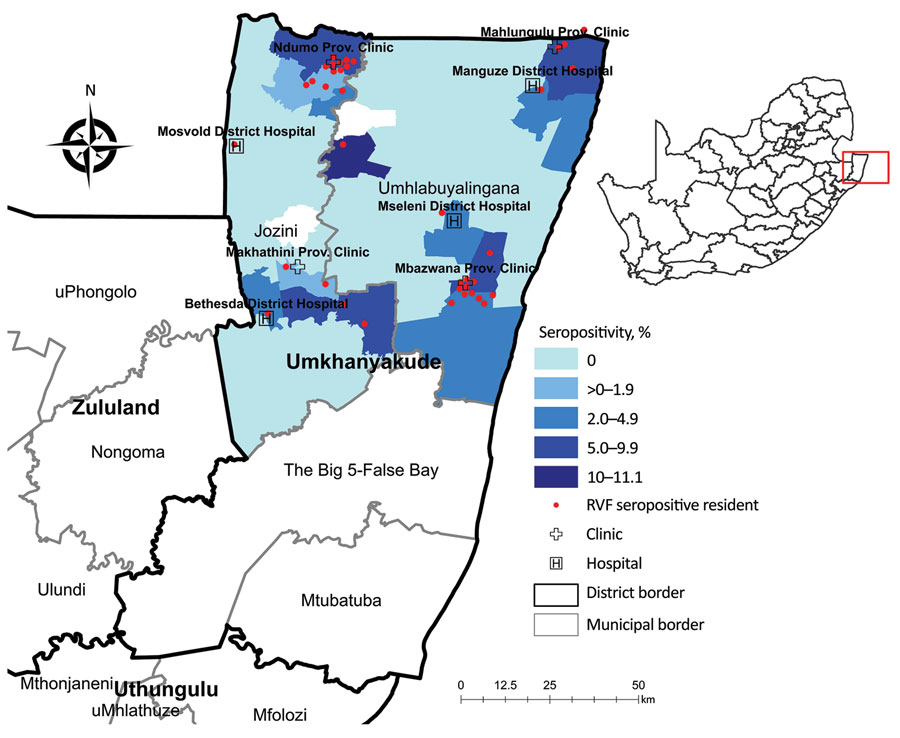Volume 27, Number 12—December 2021
Dispatch
Rift Valley Fever Virus Seroprevalence among Humans, Northern KwaZulu-Natal Province, South Africa, 2018–2019
Figure

Figure. Distribution of human Rift Valley fever virus seropositivity and ward-specific seropositivity in northern municipalities of the uMkhanyakude District, KwaZulu-Natal Province, South Africa, April 2018–August 2019. Inset shows location of uMkhanyakude District (red box) in South Africa. Map was constructed in ArcGIS 10.2 (Esri, https://www.esri.com) using district, municipal, and ward boundaries, facilities, and participants’ residential coordinates collected during the study. Data are available under CC-BY 4.0 (Creative Commons Attribution, https://creativecommons.org) license.
Page created: October 06, 2021
Page updated: November 19, 2021
Page reviewed: November 19, 2021
The conclusions, findings, and opinions expressed by authors contributing to this journal do not necessarily reflect the official position of the U.S. Department of Health and Human Services, the Public Health Service, the Centers for Disease Control and Prevention, or the authors' affiliated institutions. Use of trade names is for identification only and does not imply endorsement by any of the groups named above.